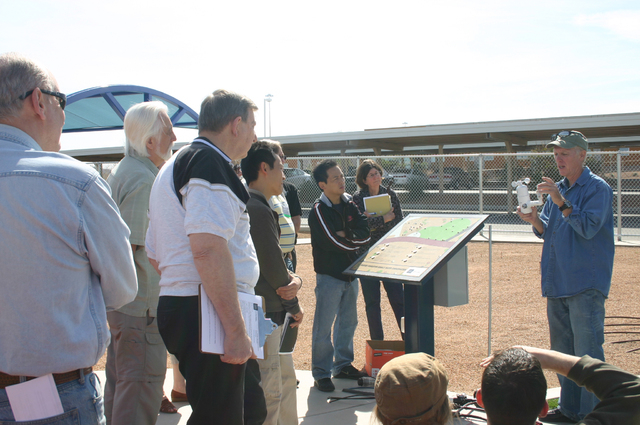Mojave Desert gardeners ahead of curve in water conservation
Although there are people in other parts of the country who find it nearly incomprehensible, the Mojave Desert has been in a drought for most of the past 15 years.
Once in a while, the Las Vegas Valley will get more than its average annual 4 inches of rainfall, but not lately. In fact, less than 2 inches fell throughout 2014.
The drought is not only a problem here or even the whole state of Nevada. The entire western part of the country has been experiencing significantly lower precipitation levels than usual.
If NASA predictions are accurate, things are not going to improve.
We live in the smallest, driest desert in North America, hence we clearly have an obligation to be thrifty with the water we have.
Lake Mead is at about 41 percent of capacity. For those of us who depend on that single reservoir for much of our water, this is a matter of great concern.
Earth may be the blue planet because of its water, but only about 1 percent of that supply is available for drinking, cooking and bathing. Most of the planet’s water is in the salty oceans or frozen at the poles. Too much of our 1 percent is impotable because it has been polluted somehow.
Now that California is finally facing the fact that water is a limited resource, our neighbors to the west are starting to pay attention in the way that Southern Nevadans have been for years.
There are many fewer lawns than a decade ago, and many of us have developed a genuine fondness for desert and desert-adapted plants. People are more conscientious about covering swimming pools and maintaining drip irrigation systems. As soon as children begin to brush their own teeth, they are learning not to let the water run while brushing.
These changes seem small until they are added together. We have lowered our water use by about 40 percent per person through voluntary actions and the encouragement of the Southern Nevada Water Authority. Impressive as that figure is, we can improve our conservation efforts.
We cannot increase the snowpack in the Rockies or change some farmers’ lavish irrigation methods. But we can stretch every gallon of water a little further.
For beautiful, tasty vegetables, a regular supply of water is essential. That requires attention to irrigation, mulch and soil improvement, and wasting none. Gardeners can be amazing conservationists by following some simple practices. Whether a person does the labor in the garden, it is important to know what to tell a hired landscaper to do.
Old irrigation systems measured water use in “gallons per minute.” Drip irrigation measures in “gallons per hour.” Originally, it was invented for growing vegetables in the deserts of Israel, but now it is commonly used to maintain shrubs and other ornamentals.
By placing drippers in the vicinity of a desired plant, the water will only reach its roots, and not the roots of any nearby weeds. Drip systems also reduce the amount of water lost to the atmosphere; a great improvement, especially compared with the volume that sprinklers lose.
Plants use more water and other resources when they are in a hot, dry site. This “transpiration” is almost the equivalent of our sweating. Using shade to lower the temperature is an effective way to decrease the amount of evaporation from the garden soil.
Mulch is a necessary addition to any garden, partly because placing mulch — bark, wood chips, straw, even rock (for desert landscapes) — will shade the soil, keep it cool, and lower water loss from the surface. Plants are less stressed when they do not need to pull extra water from the soil.
Garden aesthetics improve when there is an attractive layer of material unifying the landscape. For even more protection from heat and light, shade cloth is sold in home stores and nurseries.
Soil holds water more efficiently when gardeners and landscapers improve it with the addition of compost. Compost is the ultimate result of the breakdown process of plant or animal waste. When complete, it looks and smells like fresh healthy soil.
This is one of the best amendments available for any garden. It is a slow-release fertilizer, benefiting the plants we are trying to grow in this infertile area. It will also help water conservation. Consider a sponge that has been thoroughly saturated then squeezed until the excess is gone. Adding compost is like adding millions of little sponges to the soil. Well-amended soil tends to drain well, so it is not soggy, but it also holds onto water for plant use.
Can Mojave gardeners be an example for the rest of the country?
Angela O’Callaghan is the Social Horticulture Specialist for University of Nevada Cooperative Extension. Contact ocallaghana@unce.unr.edu or 702-257-5581.


















